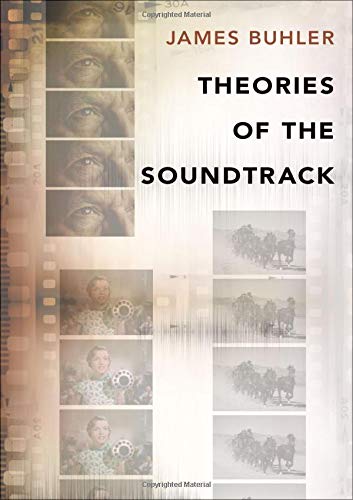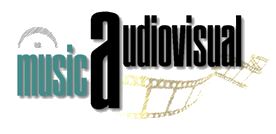Theories of the soundtrack

Ficha básica
Clasificación temática
Otros campos
SUMARIO: Chapter 1: Introduction / Five Vignettes of Early Sound Film - The Hybridity of Sound Film - Sound Film, an Audiovisual Medium - Film Sound and "Occult Aesthetics" - This Volume // Chapter 2: Early Theories of Sound Film / Introduction: The Specificity of the Sound Film - The Statement on Sound and the Concept of Counterpoint - Sergei Eisenstein and Counterpoint - Vsevolod Pudovkin and Asynchronous Sound - The Case of Deserter - Perceptual Realism - Béla Balázs and the Physiognomy of the Voice - Rudolf Arnheim and the Unity of Sound - Harry Potamkin and the Compound Cinema // Chapter 3: Theories of the Classic Sound Film: Grammars and Typologies / Introduction - Sergei Eisenstein and Vertical Montage - Modes of Synchronicity - Aaron Copland and the Functions of Film Music - Functions - Reservations - Hanns Eisler and Theodor W. Adorno and Critical Theory - Contra Eisenstein -
The Negative Thesis: Sham Identity - Bad Habits - The Classical System and the Typological Analysis - Raymond Spottiswoode and Film Grammar - Siegfried Kracauer and the Types of Cinematic Sound - Roger Manvell and John Huntley and "Functional" Music - On the Difference between Realistic and Nonrealistic Music // Chapter 4: Language, Semiotics, Deleuze / The Linguistic Analogy - Jean Mitry and Language and Rhythm - Semiotics of Film/Semiotics of Music - Christian Metz and Aural Objects - Gilles Deleuze and the Movement-Image - Zero-Point: Perception-Image - Firstness: Affection-Image - First Intermediary Stage: Impulse-image - Secondness: Action-Image - Large Action Form - Small Action Form - Second Intermediary Stage: Reflection-image - Thirdness: Relation-Image // Chapter 5: Neoformalism and Four Models of the Soundtrack / Introduction: Semiotics and Formalism - Neoformalism - Kristin Thompson and the Analytical Approach - David Bordwell and the Music(ologic)al Analogy - Noël Carroll and Modifying Music - Formal Models of Music and Film - Kathryn Kalinak and Captain Blood - A Working Model of Film Music - General Considerations - Explicit Relations of Music to Narrative - Implicit Relations of Music to Narrative - Combining Implicit and Explicit Relations of Music to Narrative - Nicholas Cook and Multimedia Systems - David Neumeyer and Vococentrism - Annabel Cohen and the Congruence-Association Model // Chapter 6: Narratology and the Soundtrack / Introduction -
Narratology and Film - Narratology and the Soundtrack - Claudia Gorbman and Narrative Functions - Sarah Kozloff and the Narrative Functions of Dialogue - Michel Chion and the Audiovisual Scene - Giorgio Biancorosso and the Cinematic Imagination - Robynn Stilwell and the Fantastical Gap - Jeff Smith and Film Narration - Ben Winters and the Nondiegetic Fallacy - Guido Heldt and Levels of Narration - Music and Focalization - Focalization in Casablanca - Conclusion // Chapter 7: Critical Theory and the Soundtrack / Introduction - Hermeneutics of Suspicion - Ideology of Content (1): Topic Theory - Ideology of Content (2): The Table of Knowledge and Communicative Efficiency - Musical Topics: A Postcolonial Critique - Ideology of System - Ideology of Apparatus - Gender, Sexuality, and the Soundtrack - Soundtrack Theory and Feminist Theory - Soundtrack Theory and Queer Theory - Queering Asynchronous Sound - Queerness and Spectacle - Suddenly, Last Summer (1959) and the Economy of Sacrifice - The Hours (2002) and Sacrificial Inversion // Chapter 8: Psychoanalysis, Apparatus Theory, and Subjectivity / Introduction - The Appareil - Jean-Louis Baudry and the Basic Cinematographic Apparatus - Jean-Louis Comolli and Technique and Ideology - Mary Ann Doane and the Ideology of Sound Editing - Rick Altman and the Heterogeneity of Sound - James Lastra and Representational Technology - Music and the Appareil - The Dispositif - Jean-Louis Baudry and the Dispositif - Jean-Louis Comolli and the Dispositif - Christian Metz and Enunciation - Dispositif and Suture - Mary Ann Doane and the Fantasmatic Body - Pascal Bonitzer and the Voiceover and Voice-off - Suture and the Soundtrack - Jeff Smith and the Critique of Psychoanalytical Model of Film Music - Neo-Lacanian Theory - The Gaze and the Voice - Michel Chion and "There is No Soundtrack" - Mimetic Synchronization and the Sexual Relation - Michel Chion and Rendering // Chapter 9: Theories of the Digital Soundtrack / Introduction - The Ontological Divide - Animated Image, Stylized Sound: The Radical Effects of Digital Rendering - Music, Sound Design, and Digital Audio Production - Theories of Stereophonic Sound - Affective Intensities, the Withering of the Leitmotif, and the Withdrawal of Identity - Postclassical Cinema and the Fraying of Narrative - Conclusion // Bibliography // Index.
